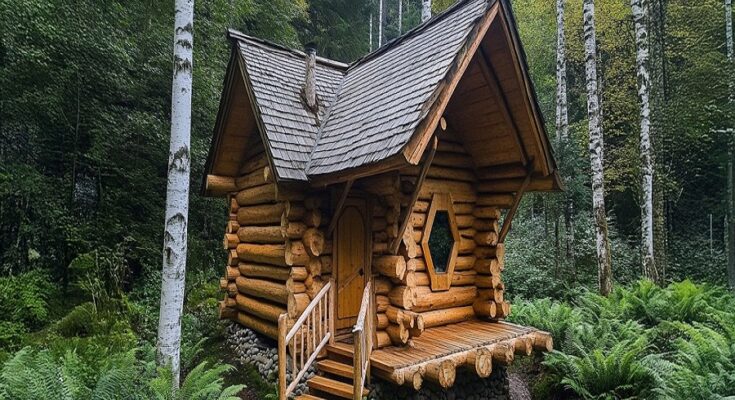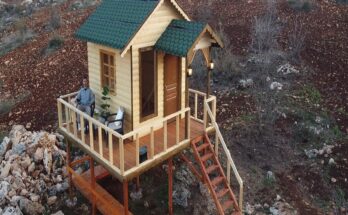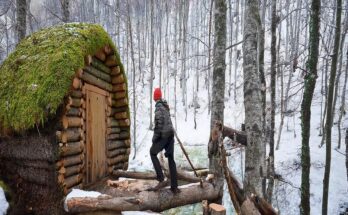Building a cozy wooden house deep in the forest is a dream for many who long for a peaceful retreat surrounded by nature. The process begins with selecting the perfect location—one that offers tranquility, scenic beauty, and access to necessary resources like water and sunlight. A clearing among tall trees, where the house can blend seamlessly with the environment, is ideal. The foundation is the first crucial step, ensuring stability and durability against changing weather conditions. Many opt for a stone or concrete base to protect the wooden structure from moisture and decay. The choice of wood is equally important; cedar, pine, or oak are popular due to their strength, insulation properties, and natural resistance to pests. Once the framework is in place, the walls and roof take shape, with large windows incorporated to invite in natural light and provide breathtaking views of the forest. A sloping roof is a practical choice, allowing rain and snow to slide off easily.
Inside, the house is designed for comfort and warmth. Wooden beams and paneling create a rustic charm, enhanced by a fireplace at the heart of the living space. The scent of fresh wood lingers, reinforcing the natural ambiance. Many choose an open-concept design, where the living room, kitchen, and dining area flow seamlessly together, maximizing space and maintaining a cozy feel. Furniture is often handcrafted from locally sourced wood, adding to the authenticity of the retreat. A well-insulated home is essential for year-round comfort, with thick rugs, soft lighting, and warm textiles making the interior inviting even on the coldest nights.
Sustainability plays a significant role in building a forest home. Many homeowners incorporate off-grid solutions, such as solar panels for electricity and rainwater harvesting systems for water supply. A wood-burning stove or a small hydropower generator may provide additional energy. Composting toilets and greywater recycling systems ensure minimal environmental impact. Landscaping is done with care, preserving native plants and trees while creating walking paths, gardens, or even a small pond to enhance the serenity of the surroundings.
Living in a secluded wooden house in the forest offers a slower, more mindful way of life. Mornings begin with the sounds of birdsong and the rustling of leaves, while evenings are spent by the fire, reading, or simply enjoying the stillness. The changing seasons bring unique joys—lush greenery in summer, golden hues in autumn, snow-covered landscapes in winter, and the fresh bloom of spring. Wildlife becomes part of daily life, from deer grazing nearby to squirrels scurrying across the roof. The isolation fosters self-sufficiency, encouraging skills like woodworking, gardening, and foraging.
Despite its idyllic nature, forest living also comes with challenges. Access to modern amenities is often limited, requiring careful planning for supplies and emergencies. Strong weather conditions, such as storms or heavy snowfall, necessitate a sturdy build and regular maintenance. Fire safety is another major consideration, requiring proper clearing around the house and the installation of fire-resistant materials. Yet, for those who embrace the simplicity and harmony of forest life, the rewards far outweigh the difficulties. A wooden house deep in the woods is more than just a dwelling; it is a sanctuary, a place where one can reconnect with nature, find solitude, and embrace a life of quiet contentment.



